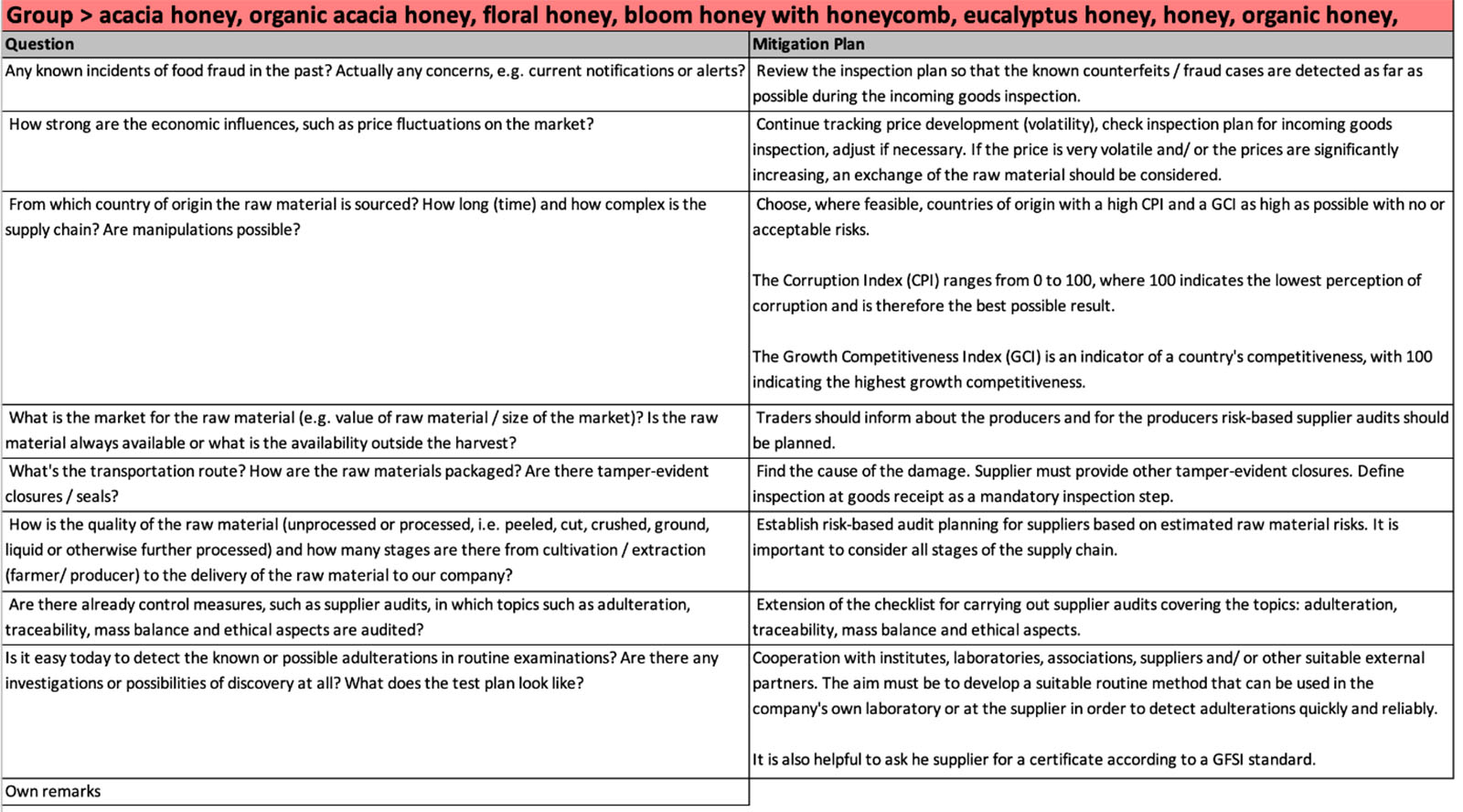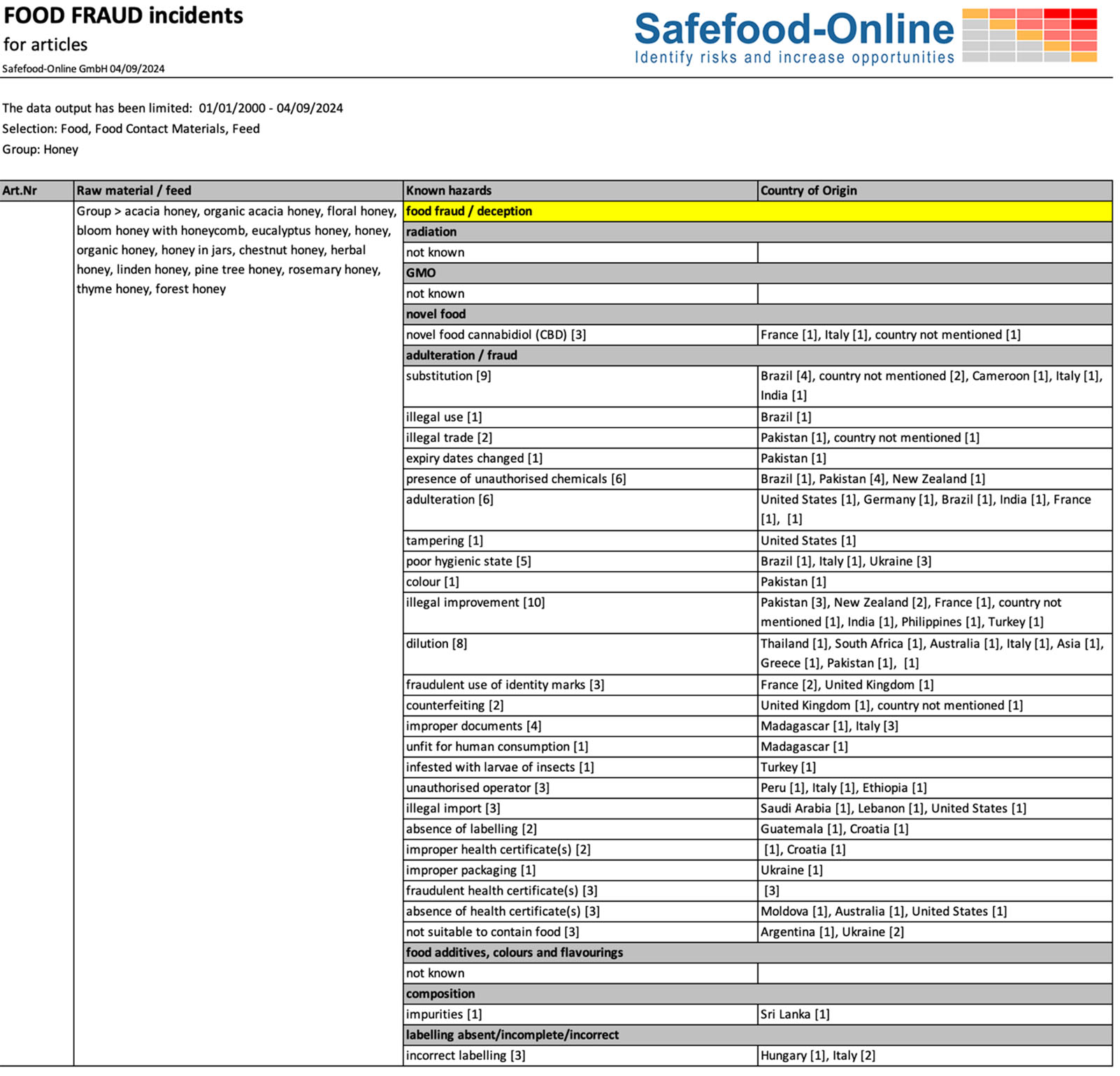Module „Food Fraud“
Food fraud involves the fraudulent and intentional substitution, addition, manipulation or misrepresentation of food, food ingredients or food packaging, labeling, product information or false or misleading statements about a product for economic gain that could affect the health of the consumer (GFSI Benchmarking Requirements, 2017). In short, food fraud stands for fraudulent foodstuffs.
In order to eliminate or minimize the risk of fraudulent activities, two essential steps are required: a "vulnerability assessment" to identify potential vulnerabilities and a "food fraud mitigation plan" with defined control measures to reduce the risks as much as possible based on the identified vulnerabilities.
SAFEFOOD-ONLINE provides an efficient tool for this process in the form of the "Food Fraud" module. Similar to the "HACCP Export" module, the raw materials or raw material groups must first be selected. The vulnerability assessment in SAFEFOOD-ONLINE starts with four questions each on the probability of occurrence and probability of detection.
The probability of occurrence involves questions on known incidents, economic influences, countries of origin and market conditions. The question on known incidents is answered automatically based on all notifications in the SAFEFOOD-ONLINE database. SAFEFOOD-ONLINE uses the "Corruption Perception Index, CPI" and the "Global Competitiveness Index, GCI" to classify the risk with regard to the country of origin.
The probability of detection is about questions of packaging (tamper-evident seals), the supply chain, control measures already in place and the possibility of detecting adulteration through control measures.
The results of the food fraud analysis are presented in four tables. The first sheet summarizes all the results of the selected raw materials. This makes it possible to see at any time how the respective questions were answered. The color indicates the classification in the risk landscape. This table can be expanded individually, e.g. with the name of the supplier, the current price or the certification status and other information.
On the second sheet, the classification is calculated from the answers on the probability of occurrence and detection and displayed in a risk landscape (see figure 8).
The third sheet (figure 9) gives a list of recommended actions based on the GFSI regulations and therefore also complying with certification standards such as BRC, IFS Food or FSSC 22000. The SAFEFOOD-ONLINE database therefore also supports the user in making strategic decisions to minimize risk. It is also possible to include company-specific instructions and thus adapt the minimization measures even better to the company's own situation.
The last results sheet (figure 10) shows all food fraud cases - according to the number of known incidents - for the selected time period.





